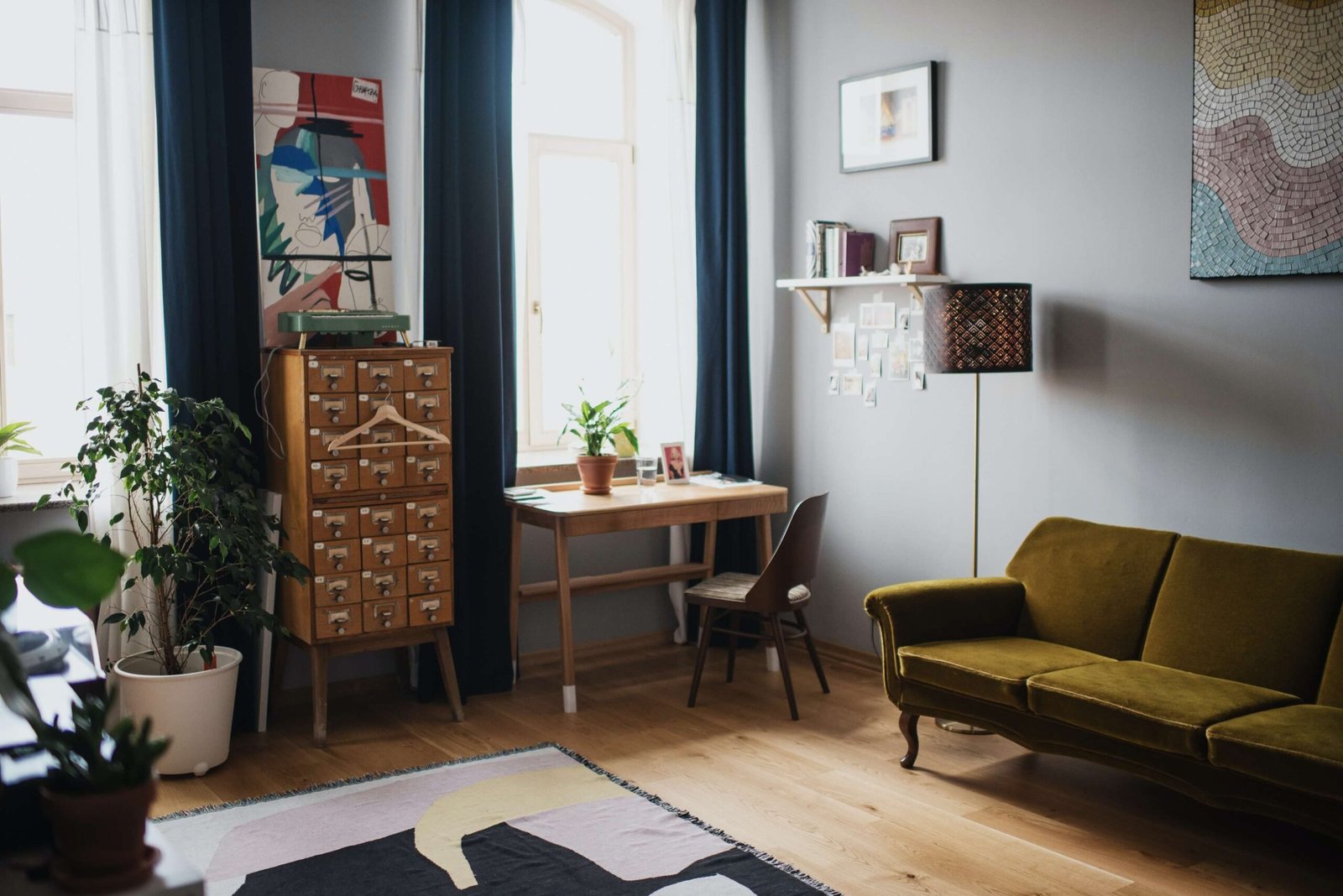In a small apartment, where these things are typically stowed to stockpile free corners, it’s common to see items like laptop power adapters across the room, rope hanging with clothes on rope dividing the room, an overflowing rack with shoes & slippers, clothes on the floor awaiting wash, wrinkled blankets, super-tossed pillows, and the dusty floor under the bed. Since you just need a modest amount of space for yourself as a single person, you may believe that a studio apartment will do.
The unanswered question
“How Can I Get the Most Out of Less Space?” One of the most creative abilities & knacks we have to master is occupying space out of available Less Space.
Even if things go unmanaged, the kitchen will be full, phenyl will be about to vanish from the left-out soap, floor cleaner, Dettol, and bleach powder packets in the bathroom, and the toilet will reside on the cistern of the washbasin. The rooms are no longer homely, but rather rat-infested go-downs.
Small living space:
When you bring and fill things into a small living space, ease flows in the air and chaos takes over completely. You may argue that they are necessary items that so you cannot simply throw them away, sell them to second-hand stores, or give them to scrap collectors in exchange for weight to fill your piggy bank.
A country Decluttering is unusual in countries where the majority of people have a conservative mindset, such as India.
So, usually, they surf on google and graze interior design magazines to check out crafty ideas and creative feasibility to keep the home pretty neat and spacious without spilling out even a safety pin.

How to make a small apartment feel more spacious:
Not just visually, but also in terms of breathing more air from empty spaces.
1. Spend some time observing and discovering hidden storage opportunities in each room.
2. Separate and pile up items that remain in plain sight & hindsight. Move the ones that will be in regular use inside the closet or wardrobes with varying sizes or uses. Rest has to go into the loft or on top of the shelves that can only be reached by ladder.
3. Locate the dry space for electric and electronic home appliances and reserve the calculated space for them.
4. Rearrange existing items from a widespread to a vertical pile with accessible space. If a couch with a recliner will take up too much space, look for a foldable chair with square cushions that can be used as décor on a fancy article shelf.
5. Essential home appliances such as an oven or refrigerator, a kneader, and a lot more must fit into a kitchen with enough storage space. If you don’t have enough floor space, consider installing sleek, long shelves on the wall.
6. To fit in extra items, the gap between the kitchen shelf upper cabinets and the ceiling can be filled with portable shelves.
7. Purchase items that are extendable, foldable, and adaptable so that they can be used for more than one purpose. A square tool, for example, can be used as a toy box to store your children’s belongings.
8. Behind-the-doors corners Door Corners are ideal for Vacuum Cleaners, Rain Coats, and Umbrellas.
9. For kitchen items, choose lighter colors rather than darker ones. The perception that things appear larger on the surface.
10. L-shaped and inverted T-shaped shelves are ideal for stacking books. When space is limited, a tabletop mixer grinder and rollout shock busters are recommended.
11. Instead of a Burma Teak or Mahogany Dining Table, a small square Japanese table with stools that can be stowed under the table when not in use would suffice.
12. In the bathroom, use larger patch wallpapers to create the illusion of more space, larger tiles to stretch the room, oversized mirrors, or a wall-mounted shelf with a large mirror as its closing door to create the illusion of plunging into deeper space.
13. Small cabinets in low-ceilinged rooms can make the room appear larger.
14. Take care of frequently used tiny items to keep them in their proper place, as they mostly lay around or occupy the couch, causing discomfort to guests.
15. Rather than throwing things away, consider donating them when they are no longer useful.
Avoid stockpiling paper documents and folder contents and convert them into digitized versions to get rid of termites and paper bugs in your small apartment; converting movie and music CDs into portable discs can avoid tampering and eliminates the need for a separate player by allowing them to be plugged into a laptop as well as a TV.
They’ll be a space-saving miracle.
